During the Second Persian War, the Persians burned and razed Athens twice. The first under the direction of Xerxes himself in 480 BC, and the second with Mardonius the following year, in 479 BC.
In 480 BC, after his victory at Thermopylae, Xerxes advanced on Attica and took the capital, whose population had been evacuated to Salamis except for a small number of citizens who preferred to entrench themselves on the Acropolis. As Herodotus tells it, it was razed to the ground and its monuments destroyed:
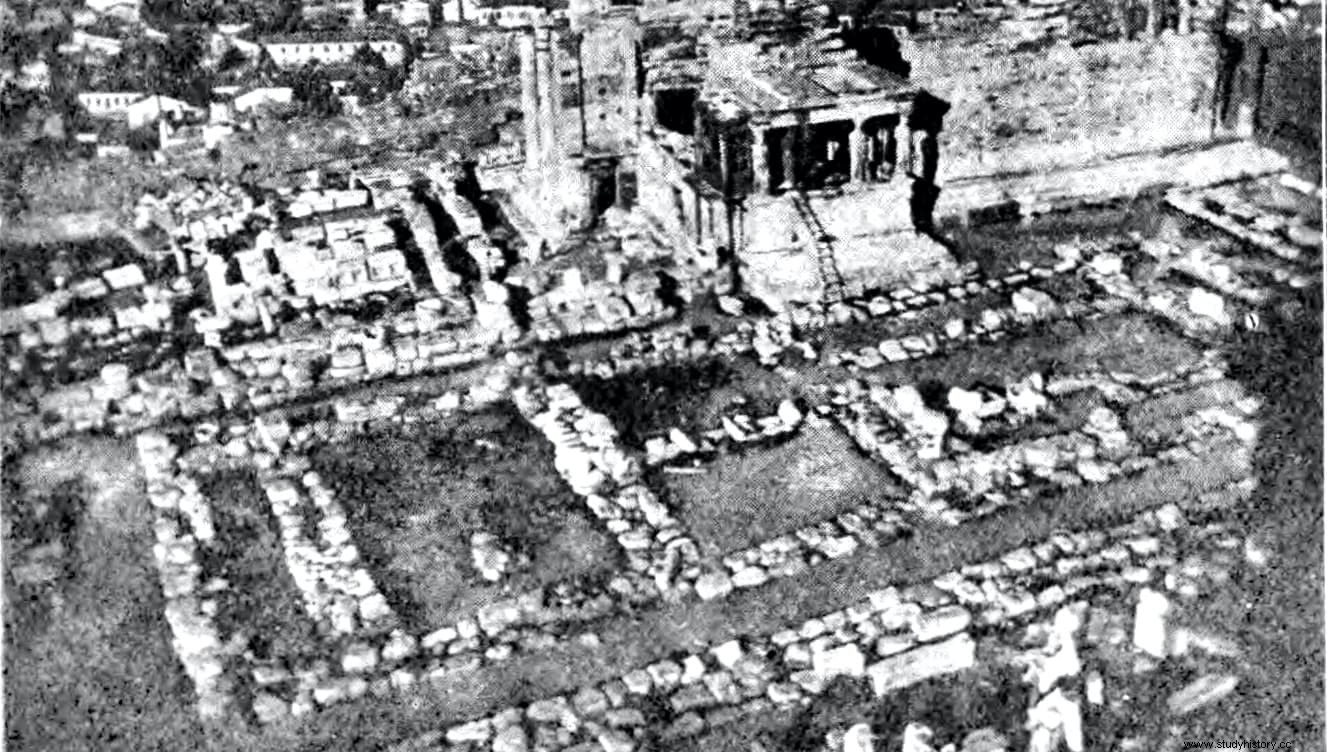
After that, the Persians withdrew to winter in Thessaly, where Mardonius remained at the head of the Median elite while Xerxes returned to Persia with the bulk of the army. The following year, in 479 B.C. Mardonius marched on Athens again, ordering deeper destruction:
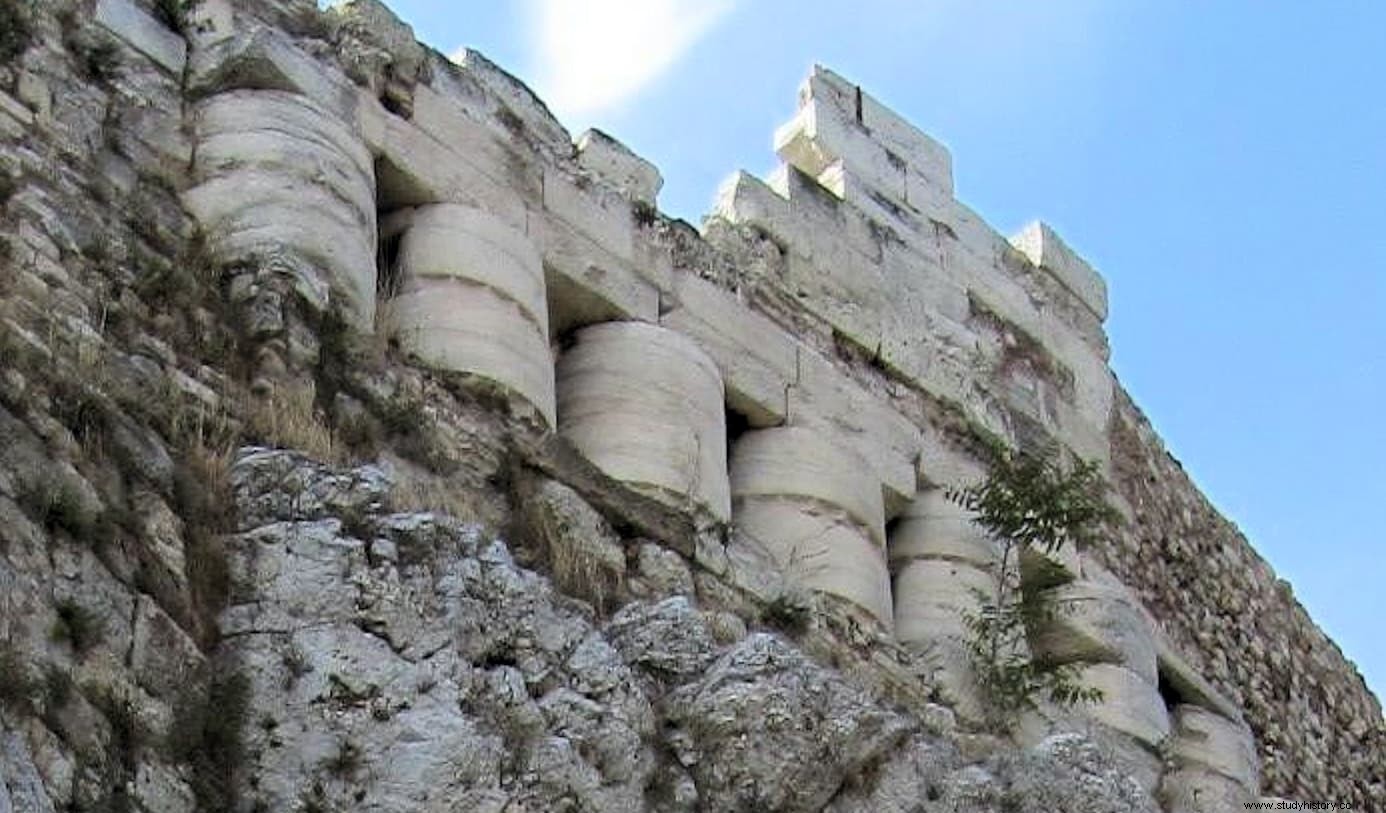
In the end, the Persians were definitively defeated at the Battle of Plataea on August 27 of that same year, 479 BC, and the Athenians rushed to rebuild their city under the leadership of Themistocles, who gave preference to defenses over temples and monuments. . Thus, the walls of the Acropolis were repaired using the remains and rubble of destroyed temples, such as the first Parthenon and the ancient temple of Athena.
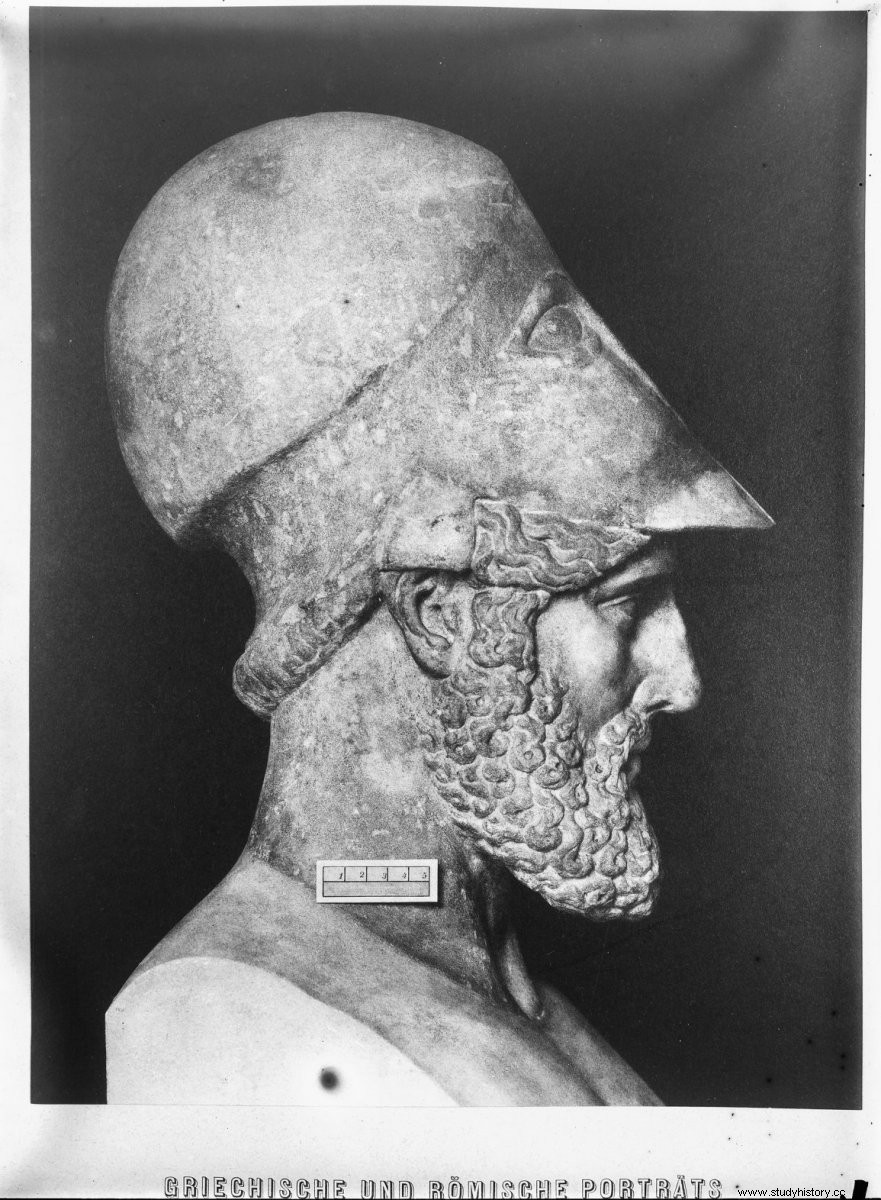
But Themistocles, like many Athenians, worried that the Persians might return. For this reason, he proposed the reconstruction of the city walls, with the erection of what we now know as the wall of Themistocles . Of course, there was a small problem, and that is that the Spartans did not like a well-walled and protected Athens because, they argued, if the Persians conquered it again, they would have an excellent base of operations from which to assault the Peloponnese.
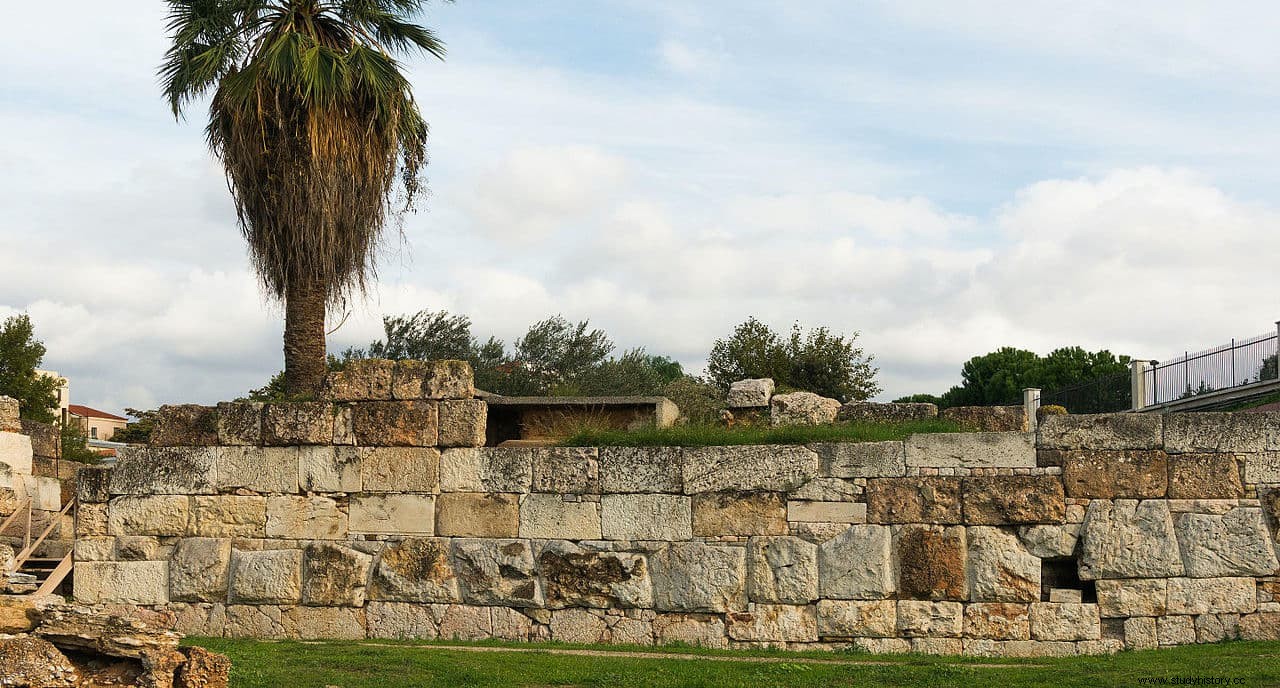
Of course, Themistocles was not going to give up that easily, and he began to hatch a stratagem that would work in two key ways. The first to keep the Spartans entertained and not to notice the deception. And the second, to speed up the construction of the new walls of Athens as much as possible, so that they were tall enough to provide adequate protection.
Precisely this urgency is the reason why everything that the Athenians had at hand was reused for the work, from the remains of the destroyed temples, to pieces of broken statues, ceramics, funerary steles, etc.
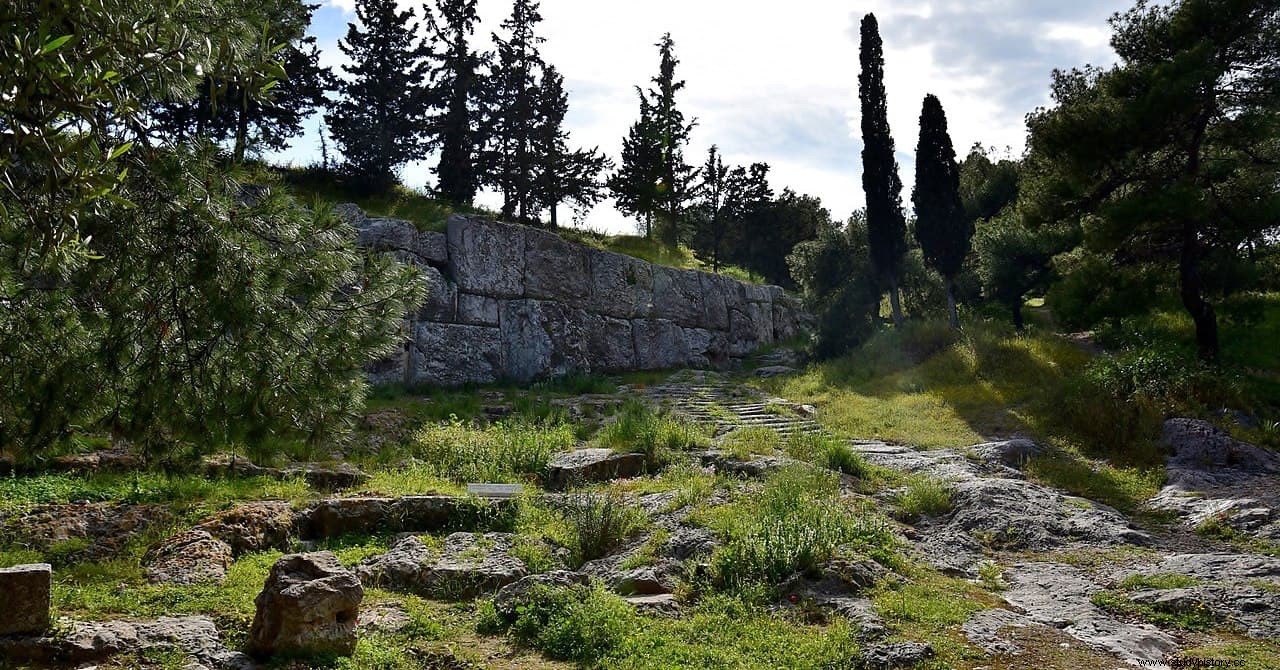
After organizing the construction work on the walls, Themistocles left for Sparta where, for several weeks, he dragged the Spartans about the matter, with the excuse of waiting for his fellow ambassadors who were due to come from Athens to give explanations.
Even when the Spartans became suspicious due to the news that many travelers brought from Athens, saying that they were quickly walling the city there, Themistocles remained in the thirteen of him denying everything.
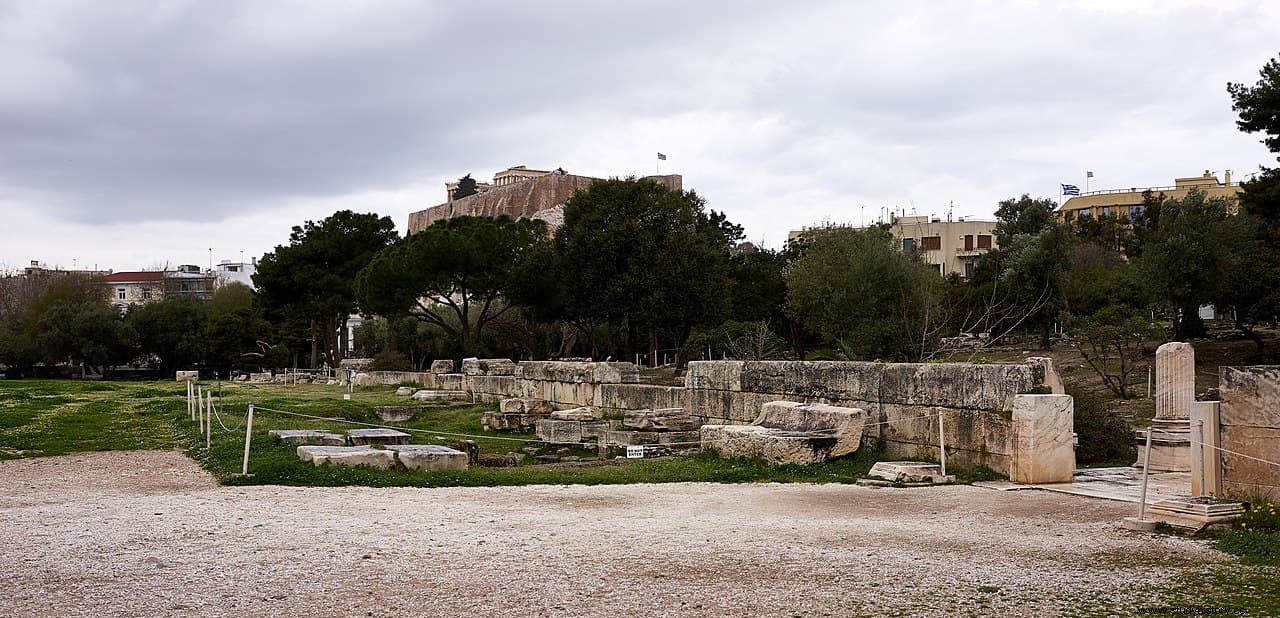
Finally, when the walls were high enough to offer adequate defense, Themistocles confessed. With this, the Athenians could begin to cleanse and refortify the Acropolis and the rest of the city with less urgency and more consideration for the final formal aspect. The walls were completed in the same year 479 BC, with a length of 8 and a half kilometers, an average height of 9 meters, and a width of 3 meters with 13 access doors.
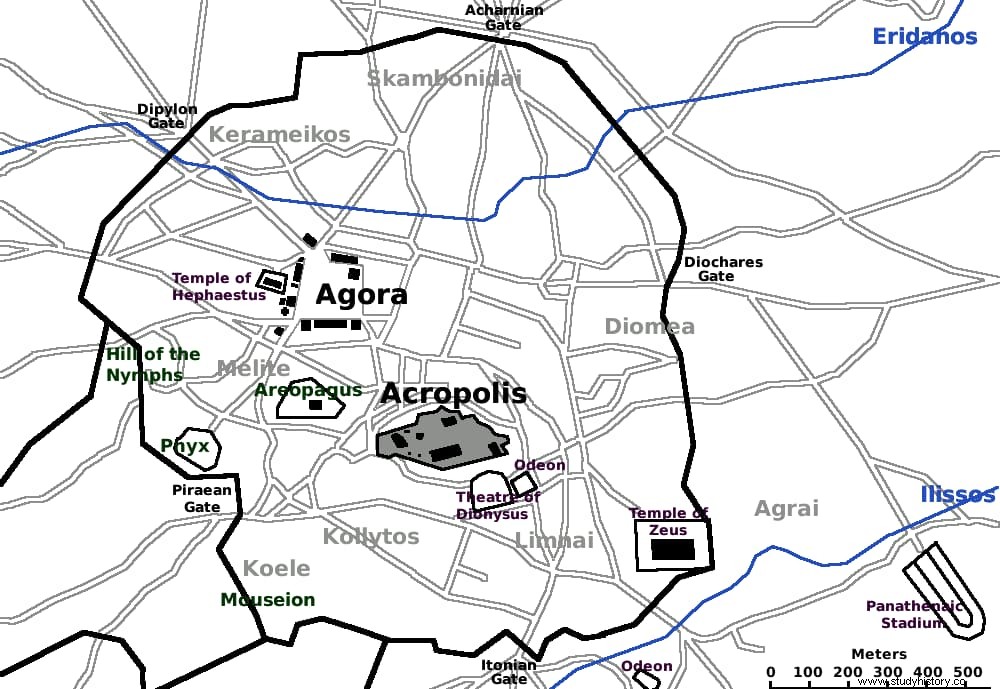
The Themistocles wall It was damaged after the Athenian defeat in the Peloponnesian War in 404 BC, when the Spartans forced the Athenians to tear down all the walls, but was repaired in 394 BC. The Siege of Sulla in 86 B.C. It also caused significant damage.
Canvases and fragments can still be seen today, mainly in the Ceramic Cemetery, the Pnyx, and in the basements of the National Bank building on Aiolou Street and 29 Erysichthonos Street. There are some 115 locations in modern Athens where remains of Themistocles' wall have been documented. , which consisted mainly of a stone plinth with one or two levels as foundations and another two levels above ground, topped by a superstructure of mud bricks.
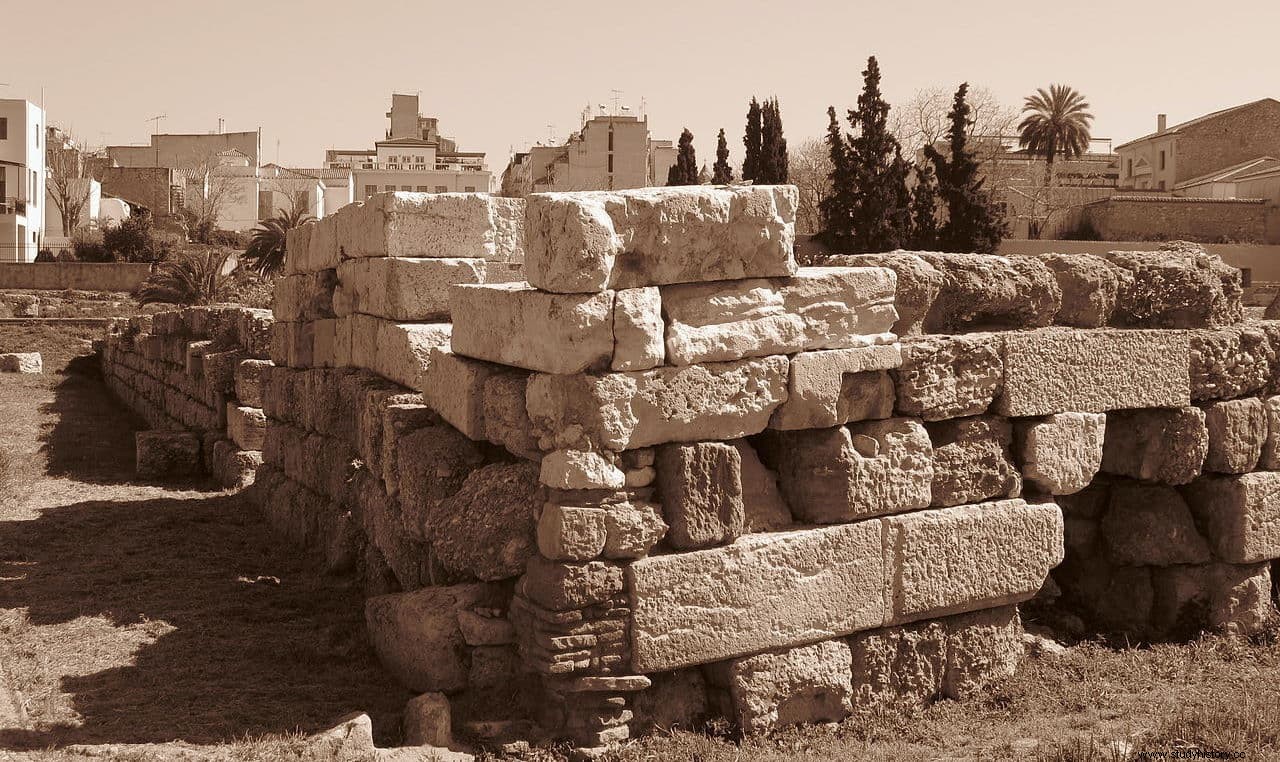
Perhaps the most famous of all the gates that have been excavated from the ancient walls is that of Dipylon, through which the road to Eleusis entered northwest of the city. Leaving through the Dipylon, and after walking just over a kilometer, one reached Plato's Academy. Although the Dipylon was built in 330 BC, it was built taking advantage of the opening of the Triasias door of Themistocles, of which the base of the west tower still survives.
As for Themistocles, he was expelled from Athens in 472 BC. for reasons that are not very clear, going to Asia Minor where he put himself in the service of the Persian king Artaxerxes I, who appointed him governor of Magnesia, where he ended his days.
